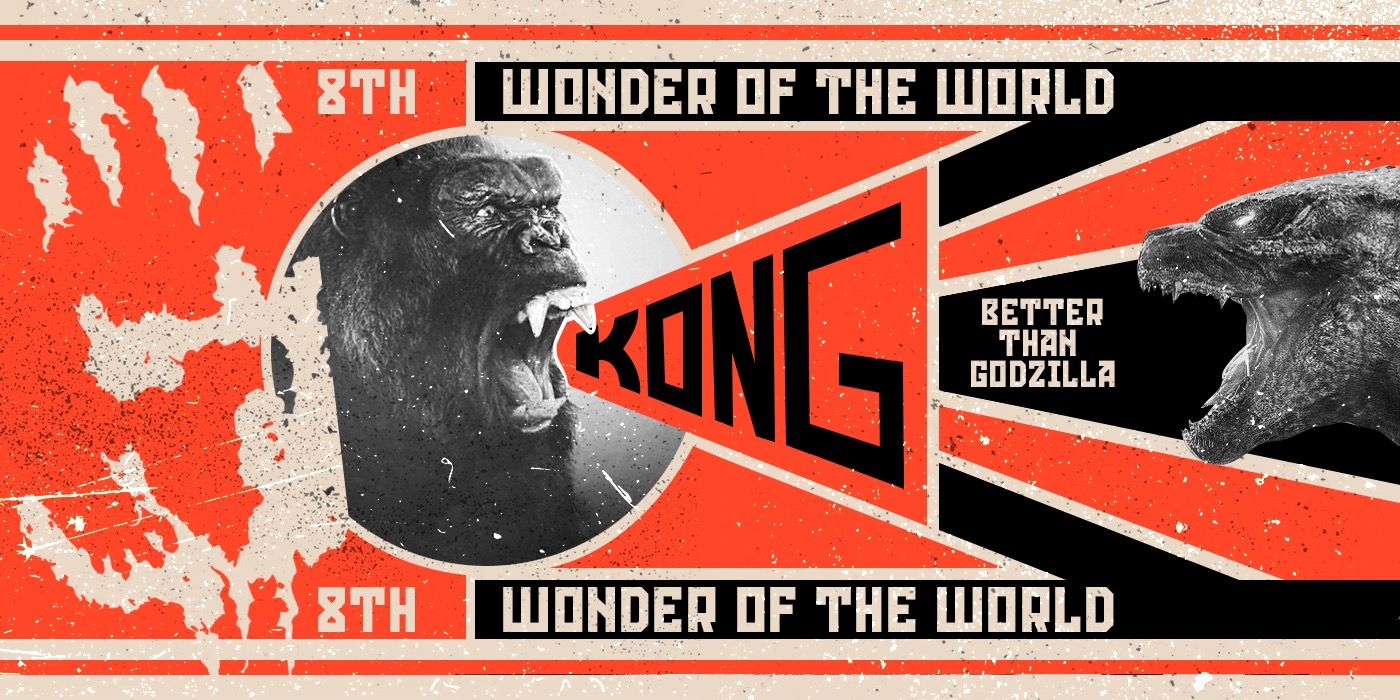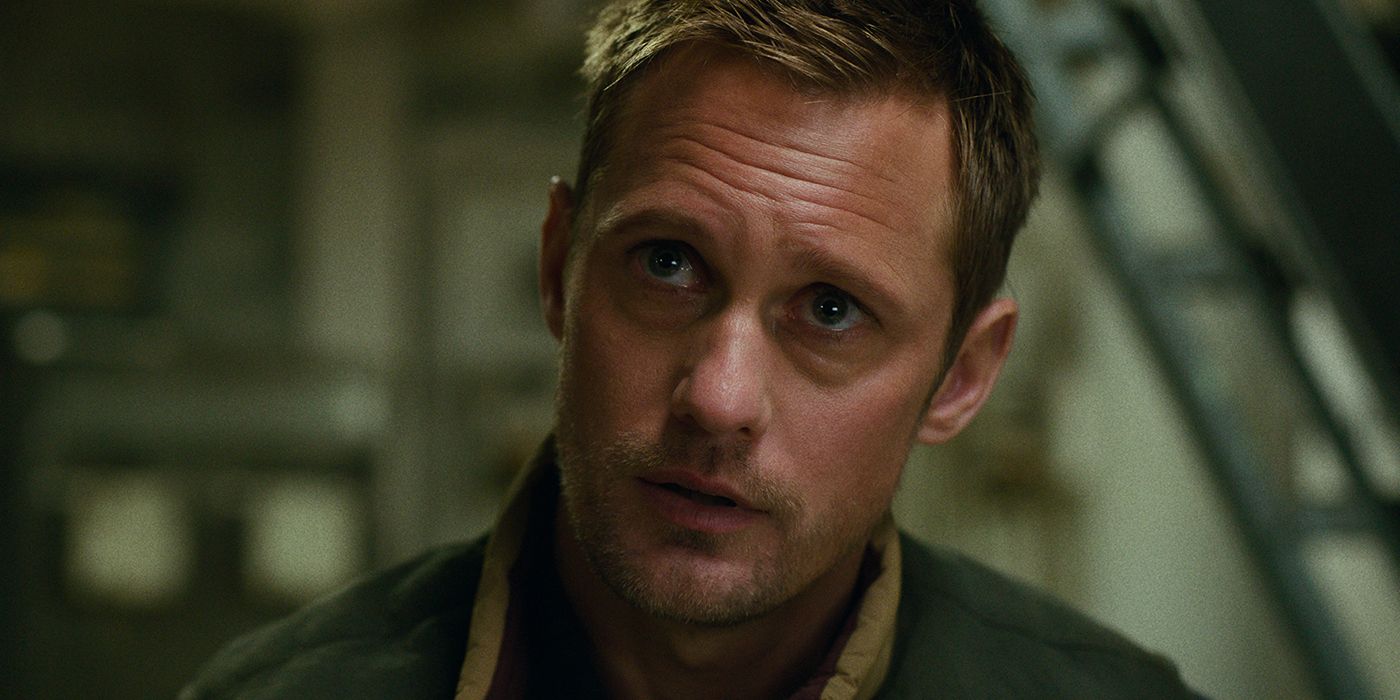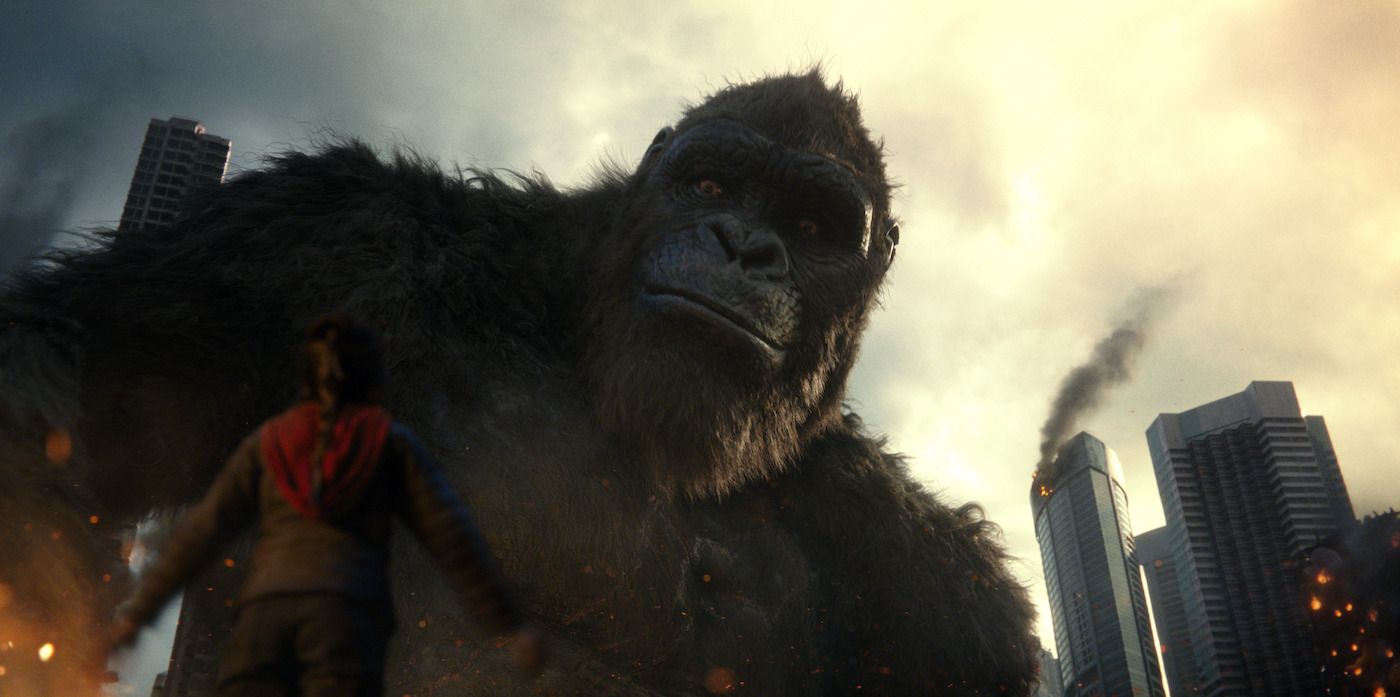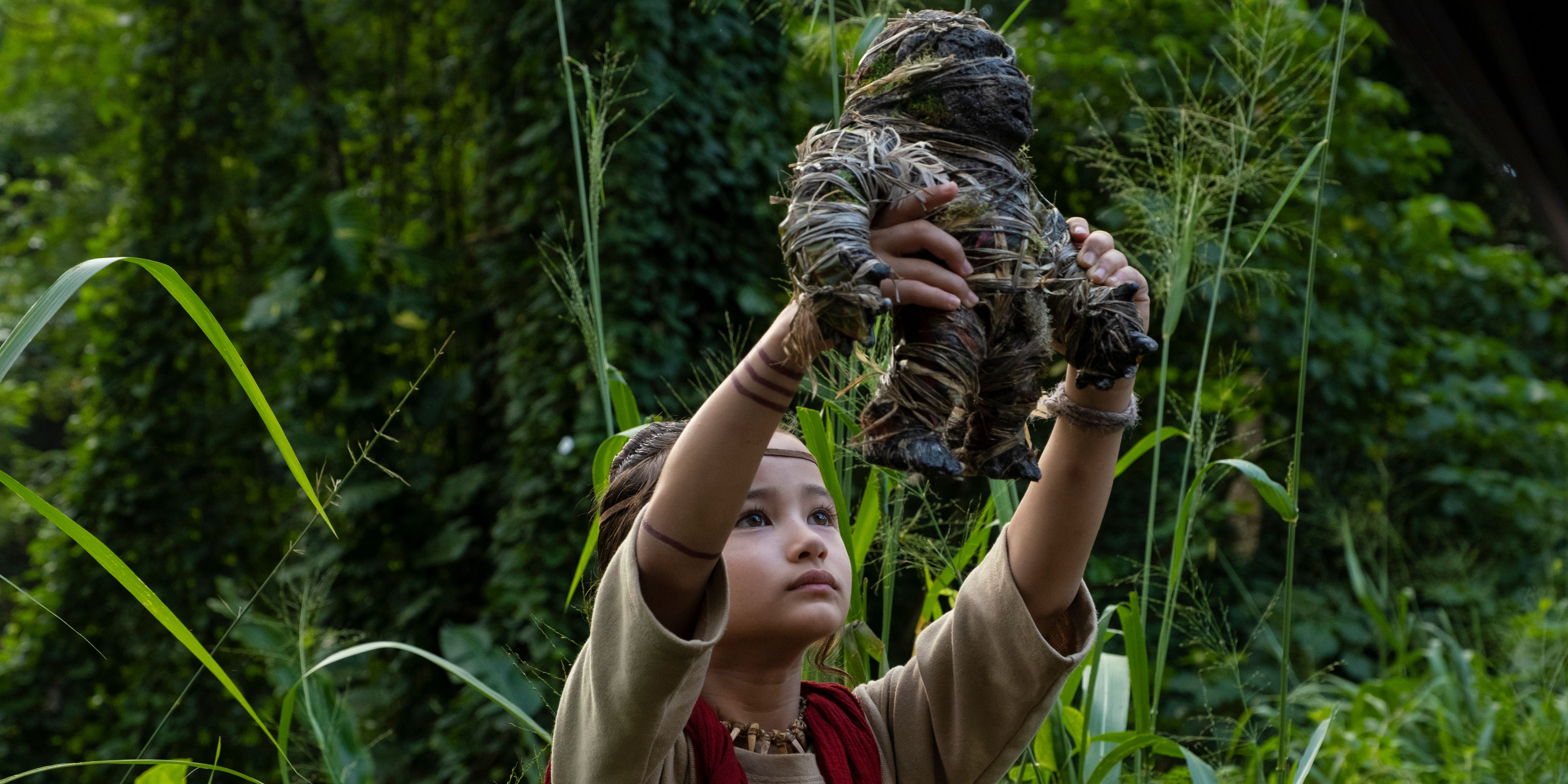[Editor's note: The following contains spoilers for Godzilla vs. Kong.]
I came into Godzilla vs. Kong expecting a fair fight. Granted, I had a preset bias as to whom I wanted to win — Godzilla, the MonsterVerse’s previously established king of the monsters — but I wouldn’t want the film to be weighted in his favor. Nor, it goes without saying, would I want it to be weighted in Kong Kong’s favor, the MonsterVerse’s previously established ruler of Skull Island. I came into the picture seeking equal playing time for each monster, allowing their ambiguous motivations room to be engaged with, allowing their fights to play out without a clear-cut emotional scale-tipping on whom us human audience members should be “rooting for.”
Something like three minutes in, I immediately started rooting for one of the monsters. And it wasn’t my boy Godzilla. And I began to realize that director Adam Wingard’s intentions were not pure, never designed to be. He made sure that King Kong was our rootable protagonist, at the expense of any love for poor Godzilla. And while I understand how he did it, and even why he did it, that doesn’t mean I like it.
Have you heard the line of critical rhetoric around this film, and monster movies in general? The idea that the human characters don’t matter, that if we get some good monster carnage it’ll all be worth it? While I fundamentally disagree with this argument (and my colleague Matt Goldberg does a great job unpacking the MonsterVerse’s unfortunate reliance on this idea here), I can’t argue with the fact that Godzilla vs. Kong does, indeed, care 0% about its human characters. Humans rush in and out of frame without any kind of uniqueness, space, or intention, existing only to blab out an on-the-nose spurt of dialogue so we kinda get their deal so they can maneuver the next piece of plot track. The flick only comes barely alive when any monster takes up the frame, moreso when they’re clobbering another monster.
Fine, they wanted to make a movie where only like 25% of it is designed to be interesting, fine, whatever. But because we have no compelling human story, no allegorical relevance, no “Sam Neill learning that he does want to be a father” to track onto these moments of monstrous mayhem, the monsters and their mayhem can’t function in any kind of neutral, raw, “nature is healing” fashion. A base reality can’t work if nothing is designed to pop off from it. Something in this movie has to have some kind of emotional attachment, and if it’s not gonna be one of the humans, it’s gonna be one of the monsters.
And in this case, Wingard picked the one that looks the most like a human, having his cake and eating it too. Godzilla, straight up, looks like a lizard. And because we humans have been evolutionary primed for so many years, not just in cinema but in regular-ass everyday life, to be attracted to and assign anthropomorphic qualities to just about everything we come in contact with, it’s harder for us to empathize with a lizard-like creature than, say, a more humanoid creature like a King Kong. You’ve looked at funny pictures of monkeys hanging out with dogs and thought, “That monkey is acting how I would!” Wingard takes this simple kernel of evolutionary status-sharing and runs with it, making funny monkey-human King Kong the obvious hero of the story, and foreign lizard-beast Godzilla its obvious villain.
Like many other monster movies, the film positions its "monster" King Kong as a victim of human greed, expansionism, and capitalism. He’s stripped from his natural habitat and forced into an unnatural simulation of one, for the purposes of human observation, attempted ownership, and stripping of powers. We watch in agony as Kong lives in agony, his face often lensed in closeup to give his human-esque face ample room to emote and express. We even watch him grow close to a young child played by Kaylee Hottle, who empathizes deeply with him, speaks sign language with him, even crafts a mini-version of him to show their special kinship. Godzilla, conversely, tends to stay lensed from far away, his giant, spiky lizard body feeling alien and unfamiliar, his propensity to slosh around the ocean until attacking keeping him anonymous, even weirdly quiet. He does have some humans in his corner — namely the paranoid podcast party of Millie Bobby Brown, Brian Tyree Henry, and Julian Dennison — and I suppose we’re expected to carry over Brown’s relationship with him into this one (even though Godzilla: King of the Monsters is just as frenetically paced and unmemorable in its humanity). But because Wingard doesn’t stage any sort of close contact between Godzilla and these humans, nor does he stage many closeups on Godzilla himself, we are left no choice but to align ourselves with Kong almost by default.
Ultimately, Kong’s relationship with Hottle is what ties his arc together. Ultimately, Kong is maybe the only character who even goes on an arc. And ultimately, Kong’s arc involves a sense of “taming” Godzilla, or at least allying himself with who, up through this point, has been positioned as our aggressive antagonist. Godzilla tends to smoke Kong their first couple rounds of combat in the film, in scenes that are designed to make us feel sorry for the ape rather than triumphant for the lizard. We also learn, through an ancestral throne room at the center of the hollow earth (???), that Kong’s species has been locked into a war with Godzilla’s species for many, many years. But instead of finally kicking that ancient-war-having lizard ass in the final fight, Wingard plays our sympathies with Kong a little more subtly.
There’s a bigger bad on the loose, one borne of a human tendency to favor innovation above all, destruction be damned: Mechagodzilla. An invention of Apex Cybernetics (as in, humans should still be the apex predator), the robo-beast is unleashed upon Hong Kong during the middle of Godzilla and King Kong’s final fight. Mechagodzilla trounces regular ole Godzilla, but King Kong doesn’t take an “enemy of my enemy” approach. Instead, Kong is approached by Hottle, reminded of their special bond, and shown the special doll she made of him. And thus, his arc as it exists in the film is complete, despite its muddlement. Godzilla, though he might not realize it yet, is not an unfamiliar enemy, he’s a tenuous ally. The real enemy is this viciously unchecked version of human technological expansion, and the way for Kong to realize that was to... be reminded of his special bond with this one human in particular? While the lines don’t connect if you think about it too much (why doesn’t the arc-connecting moment involve Kong and Godzilla? Why can’t my spiky monster boy get a moment of empathy, even at the end?), I can’t deny its efficacy in the moment, and as Kong tears off Mechagodzilla’s head and shouts at the camera, I cannot deny it felt like watching the unabashed hero of a movie finally win.
I came into Godzilla vs. Kong expecting a fair fight. I left brainwashed, a victim of King Kong propaganda (Kongaganda? Propakongda?). By using the cinematic tools we normally assign to human protagonists of films, Godzilla vs. Kong squarely positions the latter as our hero, our figure of sympathy, and our figure of change. Perhaps a future MonsterVerse entry will redeem our poor, intriguing lizard monster — or at the very least give him a better human character to bounce off of. Until then, I’ll be saltily admitting my preference to King Kong in this film, and constructing myself a tiny Godzilla doll just in case.




